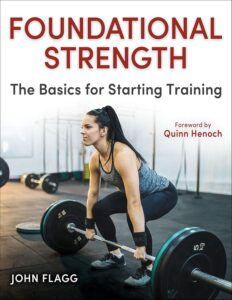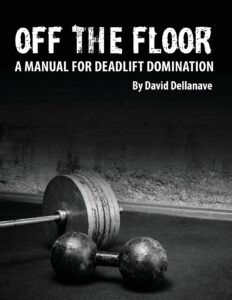When it comes to posterior chain development, few exercises match the effectiveness of deadlift variations. Among these, Romanian Deadlifts (RDLs) and Stiff-Leg Deadlifts (SLDLs) stand out as potent hip-hinge movements. Though often confused with each other—and sometimes even used interchangeably—these exercises have distinct technical differences that optimize them for different training goals.
This comprehensive guide breaks down the nuances between these powerful movements, helping you understand which variation best suits your training needs.

Biomechanical Fundamentals: Understanding the Hip Hinge
Before diving into the specifics, it’s essential to understand that both RDLs and SLDLs are hip-hinge movements—exercises where the primary movement occurs at the hip joint while maintaining a relatively fixed knee angle. The hip hinge is fundamental to proper deadlifting technique and involves:
- Pushing the hips backward
- Maintaining a neutral spine
- Creating tension through the posterior chain
- Distributing load through the hamstrings, glutes, and lower back
The differences between these variations lie in the execution details, degree of knee flexion, range of motion, and muscle emphasis.
Romanian Deadlifts: Technical Breakdown
Form and Execution
The Romanian Deadlift begins from a standing position with the barbell held at hip level. The movement pattern follows:
- Starting Position: Stand tall with feet hip-width apart, holding the bar against your thighs with a double overhand or mixed grip.
- Initial Movement: Initiate by pushing your hips backward while maintaining a slight bend in the knees (approximately 15-20 degrees).
- Descent: Lower the bar by hinging at the hips, keeping it close to your body throughout the movement.
- Range of Motion: Lower until you feel a significant stretch in your hamstrings, typically just below the knees or mid-shin depending on your mobility.
- Ascent: Drive your hips forward to return to the starting position, squeezing the glutes at the top.
Key Technical Points
- Fixed Knee Angle: The slight bend in the knees remains constant throughout the movement.
- Bar Path: The barbell travels vertically, staying close to the shins and thighs.
- Lumbar Position: Maintain a natural arch in the lower back without excessive rounding or hyperextension.
- Shoulder Position: Shoulders should remain directly above or slightly in front of the bar throughout the movement.
- Head Position: Neutral spine alignment extends to the cervical spine—avoid excessive looking up or down.
Stiff-Leg Deadlifts: Technical Breakdown
Form and Execution
Unlike RDLs, Stiff-Leg Deadlifts typically start from the floor, though they can be performed from a rack position as well:
- Starting Position: Position yourself with feet hip-width apart, standing over the barbell.
- Knee Position: Maintain nearly straight (but not locked) knees throughout the movement.
- Descent: Bend at the hips while keeping the legs almost completely straight, allowing a very slight knee bend only.
- Range of Motion: Lower the bar to the floor if mobility allows, or to the point where form begins to break.
- Ascent: Return to standing by extending the hips, maintaining the stiff-leg position.
Key Technical Points
- Leg Position: The name “stiff-leg” accurately describes the minimal knee bend required.
- Spinal Position: Maintaining a neutral spine is crucial but more challenging due to the limited knee bend.
- Range of Motion: Often greater than RDLs, frequently reaching all the way to the floor.
- Loading Considerations: Typically uses lighter loads than RDLs due to the biomechanical disadvantage.
- Flexibility Requirements: Requires significant hamstring flexibility to perform correctly.
Critical Differences Between RDLs and SLDLs
1. Knee Flexion
Romanian Deadlift: Employs a moderate knee bend (15-20 degrees) that remains consistent throughout the movement.
Stiff-Leg Deadlift: Features minimal knee flexion (5-10 degrees), creating a more extreme hamstring stretch.
2. Starting Position
Romanian Deadlift: Typically begins at the top position with the weight held at hip level.
Stiff-Leg Deadlift: Often starts from the floor, though rack variations exist.
3. Range of Motion
Romanian Deadlift: Movement typically ends when the bar reaches mid-shin or just below the knees, depending on individual mobility.
Stiff-Leg Deadlift: Usually involves a greater range of motion, often with the goal of touching the bar to the floor.
4. Muscle Emphasis
Romanian Deadlift:
- Primary: Hamstrings, glutes
- Secondary: Erector spinae, upper back, grip
- The slight knee bend allows for greater loading and potentially more glute engagement
Stiff-Leg Deadlift:
- Primary: Hamstrings, erector spinae
- Secondary: Glutes, upper back, grip
- The straighter knee position creates more intense hamstring stretch and tension
5. Appropriate Loading
Romanian Deadlift: The biomechanically advantageous position allows for heavier loading, typically 60-80% of conventional deadlift max.
Stiff-Leg Deadlift: The extreme position generally necessitates lighter loads, usually 40-60% of conventional deadlift max.
6. Back Position
Romanian Deadlift: The moderate knee bend makes maintaining a neutral spine more manageable.
Stiff-Leg Deadlift: The limited knee bend creates a more challenging position for maintaining proper spinal alignment.
Comparison with Conventional Deadlifts
To fully understand RDLs and SLDLs, it’s valuable to contrast them with the conventional deadlift:
Conventional Deadlift Mechanics
- Starting Position: Begins from the floor with a squat-like position.
- Knee Angle: Significant knee flexion at the start (approximately 70-90 degrees).
- Movement Pattern: Both knees and hips extend simultaneously.
- Bar Path: Vertical path from floor to hip level.
- Muscle Emphasis: Full-body movement engaging quadriceps, hamstrings, glutes, back, and grip.
Key Differences from RDLs and SLDLs
- Movement Initiation:
- Conventional: Begins with leg drive from the floor
- RDL/SLDL: Begins with hip hinge from the top
- Quadriceps Involvement:
- Conventional: Significant quad engagement
- RDL: Minimal quad engagement
- SLDL: Almost no quad engagement
- Training Effect:
- Conventional: Develops overall strength and power
- RDL: Emphasizes posterior chain development with controlled loading
- SLDL: Maximizes hamstring stretch and tension
- Technical Complexity:
- Conventional: Multiple joint actions must be coordinated
- RDL: Simpler movement pattern focusing on the hip hinge
- SLDL: Simple pattern but demanding on flexibility and spinal control
- Loading Capacity:
- Conventional: Allows for maximum loading
- RDL: Moderate loading (60-80% of conventional)
- SLDL: Lightest loading (40-60% of conventional)
Practical Applications: When to Use Each Variation
Romanian Deadlifts Excel For:
- Hypertrophy: The moderate knee bend allows for heavier loading, creating significant mechanical tension for muscle growth.
- Athletic Performance: The controlled hinge pattern translates well to jumping, sprinting, and other explosive movements.
- Rehabilitation: The controlled range of motion makes it suitable for athletes returning from certain injuries.
- Technique Development: Serves as an excellent teaching tool for the hip hinge pattern.
- Beginner Accessibility: More forgiving on hamstring flexibility requirements than SLDLs.
Stiff-Leg Deadlifts Excel For:
- Hamstring Emphasis: The straighter knee position maximizes hamstring involvement.
- Flexibility Development: The extreme range of motion can improve posterior chain mobility over time.
- Back Strength: Creates significant demand on the erector spinae for stability.
- Advanced Trainees: Best suited for those with established deadlifting technique and hamstring flexibility.
- Bodybuilding: The intense stretch at the bottom position can stimulate sarcomerogenesis (muscle fiber lengthening).
Conventional Deadlifts Excel For:
- Maximum Strength Development: Allows for the heaviest loading of all variations.
- Power Output: The coordinated triple extension (ankle, knee, hip) trains explosive power.
- Competition Preparation: One of the three powerlifting competition lifts.
- Full-Body Integration: Engages nearly every major muscle group simultaneously.
- Metabolic Demand: Creates significant physiological stress for conditioning benefits.
Programming Considerations
Exercise Sequencing
The optimal placement of these variations within a training program depends on your goals:
- Strength Focus: Perform conventional deadlifts early in your workout when fresh.
- Hypertrophy Focus: RDLs can work well as either a primary or accessory movement.
- Rehabilitation: RDLs with lighter loads can be appropriate even later in workouts.
- Mobility Development: SLDLs with very light loads can be effective as movement preparation.
Sets, Reps, and Loading Parameters
For optimal results, consider these guidelines:
Romanian Deadlifts:
- Strength: 3-5 sets of 4-6 reps at 70-80% of conventional 1RM
- Hypertrophy: 3-4 sets of 8-12 reps at 60-70% of conventional 1RM
- Endurance/Technique: 2-3 sets of 12-15 reps at 50-60% of conventional 1RM
Stiff-Leg Deadlifts:
- Hamstring Development: 3-4 sets of 8-12 reps at 50-60% of conventional 1RM
- Mobility Enhancement: 2-3 sets of 10-15 reps with lighter loads
- Advanced Training: Consider tempo modifications (3-4 second eccentric phase)
Conventional Deadlifts:
- Maximal Strength: 3-5 sets of 1-5 reps at 80-95% of 1RM
- Strength-Endurance: 3-4 sets of 6-8 reps at 70-80% of 1RM
- Technique Work: 3-5 sets of 3-5 reps at 60-70% of 1RM
Common Technical Errors to Avoid
Romanian Deadlifts:
- Excessive Knee Bend: Turns the movement into a partial squat, reducing hamstring tension
- Rounded Back: Shifts stress from muscles to spinal ligaments and discs
- Bar Drifting Forward: Creates disadvantageous leverage and excessive lower back stress
- Insufficient Hip Hinge: Limiting posterior weight shift reduces effectiveness
- Hyperextending at Lockout: Creates unnecessary spinal compression
Stiff-Leg Deadlifts:
- Locked Knees: Increases injury risk to knee joints and hamstring attachments
- Rounded Upper Back: Commonly occurs due to insufficient flexibility
- Bouncing at Bottom: Reduces tension and increases injury risk
- Excessive Load: Compromises form due to the biomechanical disadvantage
- Insufficient Bracing: The extreme position demands rigorous core stabilization
Biomechanical Analysis: Muscle Activation Patterns
Research using electromyography (EMG) has revealed important differences in muscle activation between these variations:
Hamstring Recruitment
- SLDLs typically show the highest peak hamstring activation
- RDLs demonstrate longer time under tension for the hamstrings
- Conventional deadlifts show high hamstring activation primarily during the initial pull
Glute Engagement
- RDLs often demonstrate the highest glute activation at the top range
- Conventional deadlifts show high glute activation throughout the entire concentric phase
- SLDLs show moderate glute activation with peak engagement at lockout
Erector Spinae Demand
- Conventional deadlifts create the highest peak spinal erector demand
- SLDLs maintain high erector activation throughout the movement
- RDLs show moderate but sustained erector engagement
Conclusion: Selecting the Right Deadlift Variation
The ideal deadlift variation depends entirely on your training goals, experience level, and individual biomechanics:
- For overall strength development: Prioritize conventional deadlifts
- For posterior chain hypertrophy with moderate loads: Choose Romanian deadlifts
- For maximum hamstring stretch and development: Implement stiff-leg deadlifts
- For beginners learning the hip hinge: Start with Romanian deadlifts
- For advanced trainees seeking specialized development: Rotate all three variations periodically
Rather than viewing these as competing exercises, consider them complementary tools in your training arsenal. By understanding the subtle yet significant differences between Romanian deadlifts, stiff-leg deadlifts, and conventional deadlifts, you can strategically implement each variation to accelerate your progress toward specific strength and physique goals.
Remember that individual anatomy, mobility, and training history will influence your optimal execution of these movements. Take time to master the technical nuances of each variation, and you’ll unlock their full potential for transforming your posterior chain development.
Hey there! We hope you love our fitness programs and the products we recommend. Just so you know, Symku Blog is reader-supported. When you buy through links on our site, we may earn an affiliate commission at no extra cost to you. It helps us keep the lights on. Thanks.
Disclaimer: The information provided in this discussion is for general informational and educational purposes only. It is not intended as medical or professional advice. Only a qualified health professional can determine what practices are suitable for your individual needs and abilities.


